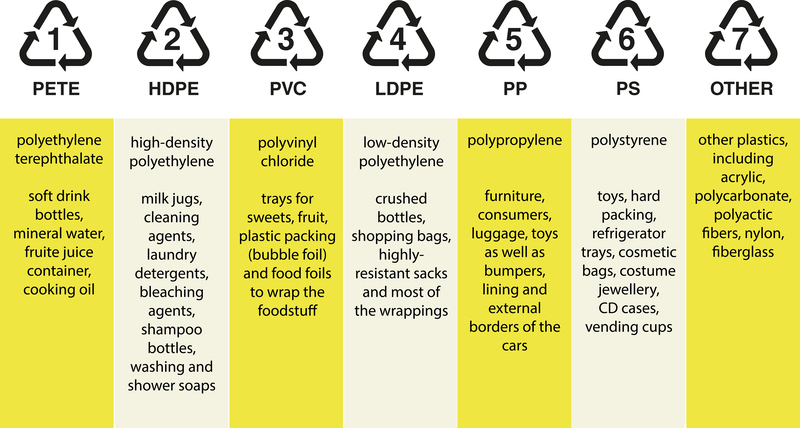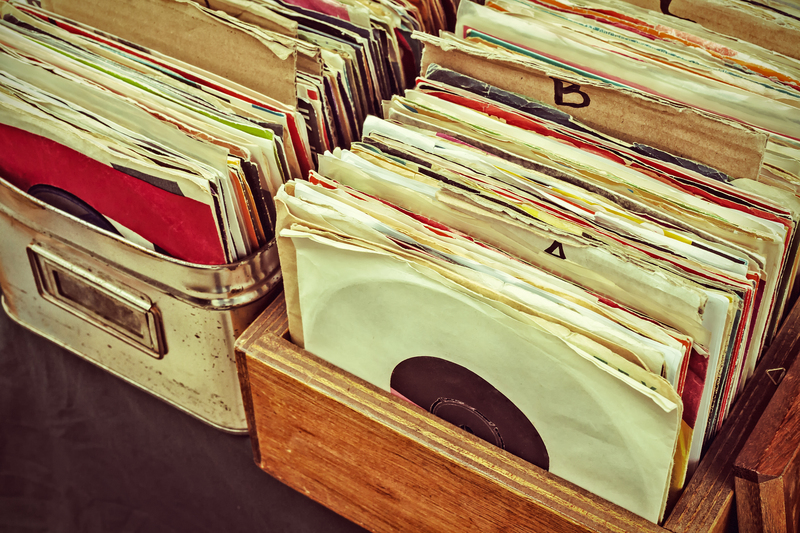Simple Steps for Recycling Cookware Responsibly
With an increasing focus on sustainability, recycling everyday household items has become more important than ever. While most of us are familiar with recycling paper, plastics, and glass, cookware recycling remains a less-discussed topic. Properly recycling cookware not only helps reduce landfill waste but also recovers valuable materials and prevents environmental harm. In this comprehensive guide, you'll discover simple, effective, and responsible steps for recycling your old, worn-out pots, pans, and bakeware.

Why is Responsible Cookware Recycling Important?
Many households accumulate unused or damaged cookware over time, including frying pans, saucepans, baking trays, and nonstick items. Throwing cookware in the trash can lead to environmental problems, as metals and synthetic coatings may take decades to decompose, leach harmful chemicals, or release greenhouse gases. By understanding the correct recycling steps, you not only clear your kitchen clutter but also contribute to a greener planet.
- Metals in cookware--like aluminum and stainless steel--can be recycled almost endlessly without loss of quality.
- Proper recycling reduces demand for raw materials and saves energy.
- Careless disposal may contaminate soil and water with non-stick or chemical coatings.
What Types of Cookware Can Be Recycled?
Before learning how to recycle cookware responsibly, it's essential to know which items are generally recyclable:
- Aluminum Cookware: This includes most everyday pots and pans; aluminum is valuable and widely accepted by scrap metal recyclers.
- Stainless Steel Items: Popular for their durability, stainless steel pans have a high recycling rate.
- Copper Cookware: Often used in premium or antique pieces.
- Cast Iron Cookware: Though heavy, cast iron can be repurposed, recycled, or refurbished.
- Bakeware: Metallic bakeware such as cake tins and cookie sheets.
However, not all cookware is treated equally in the recycling process.
- Nonstick Pans: These often require special handling due to chemical coatings.
- Cookware with plastic handles or glass lids: May need careful disassembly before recycling.
- Ceramic, glass, or enamelware: Might not be recyclable in most curbside programs, but could be accepted at specialty facilities.
Understand the Recycling Symbols and Materials
Flip your cookware over and look for recycling symbols (usually a triangle with a number inside). While these are more common on plastics, some brands stamp their metals with recycling information. Familiarizing yourself with cookware material types is the first step to responsible disposal.
Common Materials and Their Recycling Processes:
- Aluminum: Easily melted and made into new products.
- Stainless Steel: Often taken by scrap yards for resale or direct recycling.
- Copper: Valuable at scrap yards; keep separated from other metals.
- Cast Iron: Can be melted down or refurbished for reuse.
- Non-Stick Coating (PTFE/Teflon): Requires removal before recycling the core metal. Some recycling centers do not accept nonstick cookware.
Step 1: Inspect and Sort Your Cookware
Gather all your old or broken cookware. Carefully assess each item and separate them by material:
- Ferrous metals (magnetic - cast iron, steel pans)
- Non-ferrous metals (non-magnetic - copper, aluminum)
- Cookware with other materials (plastic, rubber, wood, or glass handles and lids)
If your item has mixed materials, try to remove non-metal parts--such as plastic handles, knobs, or glass lids--where possible. Cookware with composite materials might not be accepted for recycling unless separated.
Step 2: Clean Your Cookware
Recycling facilities prefer items free of food residue or grease. A quick wash improves the chances that your cookware will be accepted. Even for heavily used pans, scraping off burned-on residue or oily coatings helps the recycling process.
Step 3: Find a Local Recycling Solution
Cookware recycling options can vary by location. Depending on your area, you may have one or more of these options:
1. Scrap Metal Recyclers
- Most cookware (especially metal types) is accepted by scrap yards.
- Locate nearby metal recycling centers by searching "scrap metal recycling near me."
- Scrap yards are ideal for aluminum, stainless steel, copper, and cast iron items.
Tip: Different metals often have different values at scrap yards--separate them to maximize rewards.
2. Municipal Recycling Centers
- Some local recycling programs accept small metal items, including cookware, in curbside bins or at drop-off locations.
- Check with your city's waste management website or hotline to confirm if cookware is accepted.
- Items with plastic, rubber, or glass parts may need special handling.
3. Brand Take-Back or Mail-Back Programs
- Certain manufacturers and retailers offer mail-in or take-back recycling for their own brands.
- Check cookware makers like GreenPan, Calphalon, or others for eco-recycling initiatives.
- Some big-box retailers (e.g., Target or Williams-Sonoma) occasionally run recycling events.
4. Donation and Charitable Organizations
- If your old cookware is still functional, consider giving it a second life through donation.
- Donating to thrift stores, shelters, or community kitchens extends product life and reduces waste.
- Ensure donated items are clean and in usable condition.
Step 4: Special Considerations for Nonstick and Coated Cookware
Nonstick pans with PTFE or ceramic coatings present unique recycling challenges.
- Many nonstick coatings cannot be recycled with other metals due to chemical composition.
- Some recycling centers require you to strip off the nonstick layer before accepting the pan.
- If removal isn't possible, call local centers to ask about special disposal services.
- If disposal is the only option, wrap the pan securely to prevent injury and label it as "nonstick cookware" for sanitation workers.
Earth911.com and your city's waste management hotline can help you identify solutions for recycling nonstick cookware responsibly.
Step 5: Explore Upcycling and Creative Reuse
If recycling facilities don't accept certain pieces, get creative! Upcycling cookware gives it new value and keeps it out of landfills.
Creative Upcycling Ideas:
- Planters: Old pots and pans make quirky garden planters, perfect for herbs or flowers.
- Wall Art: Decorative trays or pans can become eclectic kitchen art or display pieces.
- Organizers: Use metal bakeware to organize tools, hardware, or office supplies.
- Candle Holders: Shallow pans or muffin trays can be repurposed for homemade candles.
- Bird Feeders: Transform frypans or cake tins into outdoor feeders or birdbaths.
With a bit of imagination, almost any cookware item can enjoy a second life!
Step 6: Safe Disposal for Unrecyclable Cookware
Some cookware, especially ceramic, glass, or those with heavy coatings, does not fit typical recycling systems. If all else fails:
- Contact city waste management for hazardous or bulky item pickup days.
- Wrap sharp or heavy items securely before placing in the trash to prevent injuries.
- If possible, break down ceramic or glass pieces to minimize landfill space used.
- Avoid burning or improper disposal, as chemicals or coatings may release toxins.
Best Practices for Future Purchases
Responsible cookware recycling starts with smart buying choices. When upgrading to new pots or pans, select brands that prioritize recyclable materials and minimal coatings. Look for:
- Products made from single metals such as stainless steel, aluminum, or cast iron.
- Brands that offer recycling, take-back, or lifetime warranty programs.
- Uncoated or natural finishes over synthetic non-stick coatings.
- Labels or certifications indicating recyclable or eco-friendly materials.

FAQs About Cookware Recycling
Can old nonstick pans be recycled?
Some facilities accept nonstick pans only if the coating is removed. Always check with your local recycling center. Otherwise, these may require landfill disposal or mail-back programs from certain brands.
Where do I recycle large items, like cast iron skillets?
Scrap metal yards are best for heavy items. Many communities also offer bulk item collection or dedicated metal recycling containers at city recycling centers.
What happens if I put cookware in the curbside recycling bin without checking?
Putting improper items in your bin can lead to contamination--and may result in the whole batch going to landfill. Always confirm with your local program before placing cookware in the recycling bin.
Is rusty cookware recyclable?
Yes. Surface rust on metal pans or cast iron does not impact recyclability. Clean heavy debris before recycling.
Conclusion: Take Action for Responsible Cookware Recycling
Recycling cookware responsibly is easier than it seems. By following these simple steps--inspecting, sorting, cleaning, and using appropriate drop-off locations--you'll help close the loop on metal products, reduce landfill growth, and promote a sustainable kitchen. Remember to check with your local facilities and take advantage of donation or upcycling opportunities whenever possible.
With a commitment to these responsible recycling practices, your kitchen cleanouts can make a meaningful environmental difference.
- Ready to start? Gather your old cookware and contact your nearby recycling center today!
- Spread the word. Share this helpful guide to encourage others to recycle cookware responsibly and sustainably.
Together, we can turn old pots and pans into valuable resources--and create a cleaner, greener world for everyone.